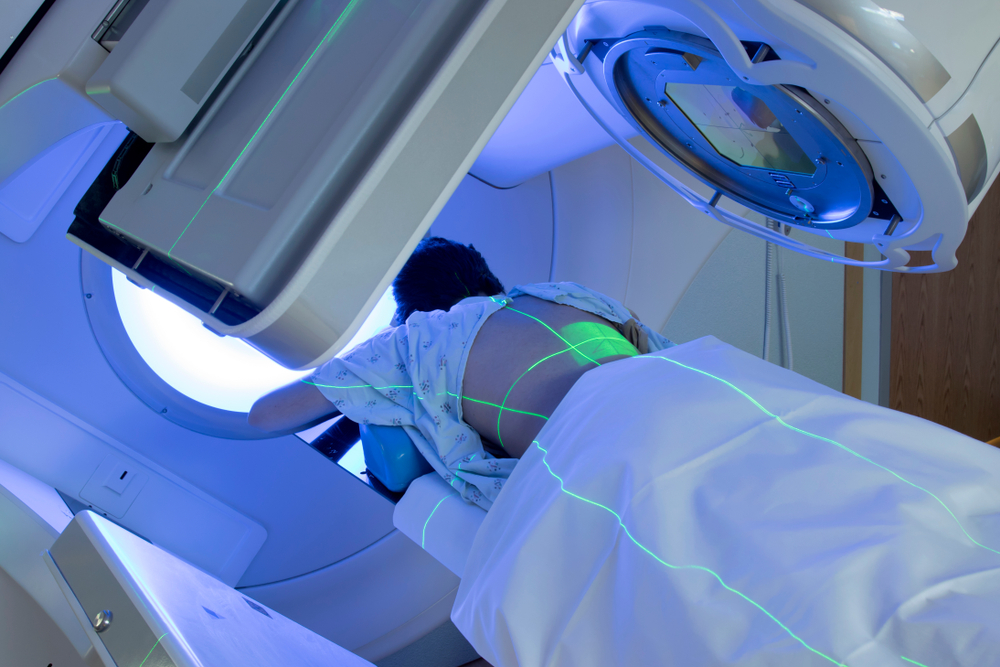
3D Conformal Radiation Therapy
Three-dimensional conformal radiation is one of several forms of radiation therapy techniques that enables radiation oncologist to mould radiation beams to the contours of the tumour. The Radiotherapy is implemented by a team that includes radiation oncologist, Medical physicist and radiotherapy technical staff.
3-D conformal radiation treatment provides radiation to cancerous cells more accurately than traditional 2-D radiation therapy. By radiotherapy malignant, non-cancerous tumours and some functional disorders are treated.
The route of several radiation beams that shall be pointed at the tumour from various directions is plotted by professionals using cutting-edge technology in order to get ready for 3-D conformal radiotherapy. The beams give a predetermined treatment dosage to the tumour through 3-D conformal radiation, which is distributed across the nearby healthy tissue to reduce the entry and exit dosage to a single location.
With help of planning images a plan is developed using a Treatment Planning System (TPS) that provide guidance for beams’ path arrangement ensuring that these are directed towards the tumour ensuring its proper coverage and conformity in three dimension. Through 3-D conformal radiation, the tumour and gets the intended dose of radiation while sparing the normal neighbouring healthy tissues.
Other technologies can be coupled with 3D CRT to further improve dose delivery and sparing of healthy tissues e.g. respiration-gated synchronized treatment, or surface-guided radiation therapy
Procedure:
You will be subjected to be a simulation process as part of radiotherapy planning process. The optimal treatment plan will be developed using 3D imaging. At least one of the imaging tests listed below will be performed for the simulation process:
- CT scan, or computed tomography
- MRI (Magnetic Resonance Imaging)
- PET scan, or positron emission tomography
- PET/CT imaging
The tumour and other Organs at Risks (OAR) are delineated in three dimensions following imaging. A 3D sketch of nearby healthy organs that should be avoided is also provided.
Then, beams are placed to provide the tumour with a specified amount of radiation while avoiding healthy tissue. To ensure that all components of the tumour and normal tissues get the same quantity of radiation, special computer software is needed.
The beams are modified and pointed in various ways at the tumour. The harm to healthy tissues is lessened when more beams are used than when only a few beams are used.
Multileaf Collimators (MLCs the geometry of the beams prevents damage to healthy tissue. The beam can be shaped by Multi leaf Collimator (MLC).
Multileaf Collimators (MLCs): These devices employ "leaves" that may be utilised for precisely shaping radiation beams. The leaves are thin metal pieces that move swiftly to create a variety of intricate shapes. Intensity-modulated radiation therapy (IMRT) also uses these leaves the shaping of beams.
The actual treatments take about 10 to 15 minutes for the majority of patients. The procedure is similar to undergoing X-ray or computed tomography (CT) scan. While the linear accelerator gantry swings across your body on the treatment bed, you could feel the machine whirring or clanking, but it won't really touch you as it is computer controlled and equipped with sensors. You will not have any sensation of beams entering and traveling through your body.
The specific location of the tumour and the configuration of normal tissues and organs can be impacted by the normal movements of your body, such as a cough or sneeze, the expansion and contraction of your lungs, or possibly the beating of the heart. These are taken into account while developing a radiation plan for treatment e.g. Image guidance and respiratory gaiting.
Benefits:
3D conformal radiation treatment has improved results for a variety of cancer forms, including:
- Brain tumours
- Breast cancer
- Neck and head cancers
- Lung tumours.
- Prostate cancer
Side effects:
Most people will have no or little adverse effects at all. If you do have side effects, they are connected to the region being treated. Typical negative consequences include:
- Skin changes.
- Hair fall
- Nausea
- Vomiting
Conclusion:
There are several different types of radiation therapy. Intensity-modulated radiation therapy (IMRT) and 3D conformal radiation both target the tumour while minimising radiation exposure to the healthy tissue around it. After considering your treatment goals, the type, location, and shape of the tumour, your radiation management team will determine which type of radiation is best for you. Your radiation treatment team is available to address any queries or worries you may have.






